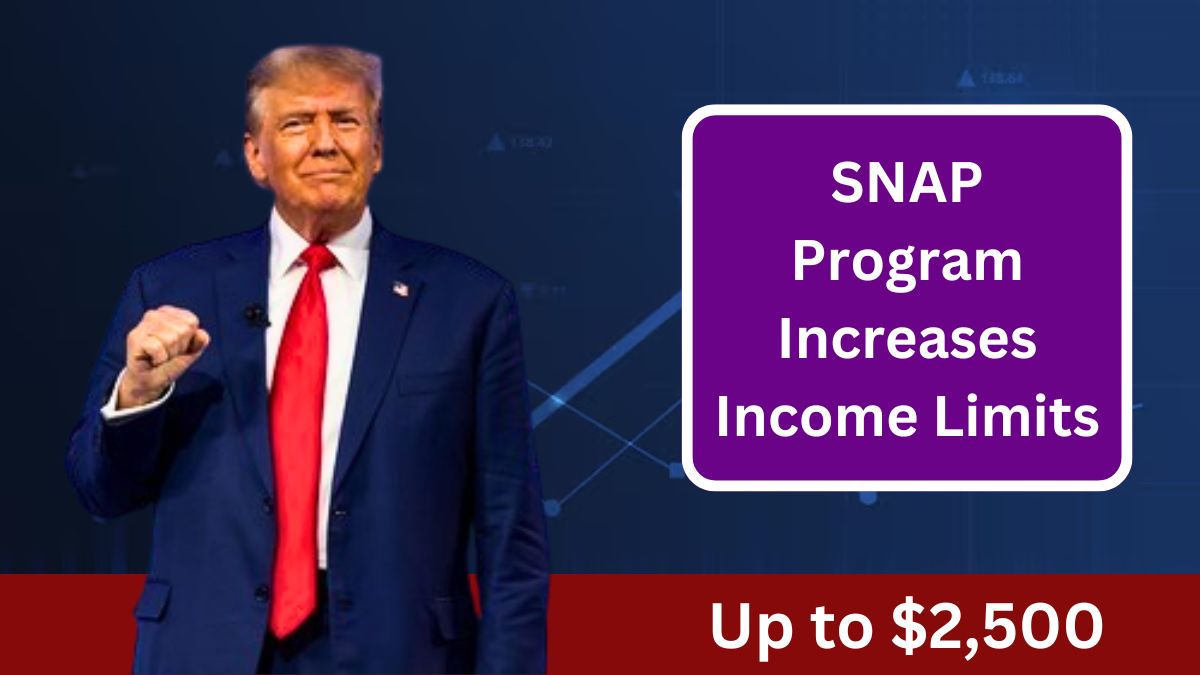The Supplemental Nutrition Assistance Program (SNAP) recently adjusted its income limits and benefit amounts as part of an annual cost-of-living update. Effective from October 1, this change ensures that the program stays aligned with inflation and can better serve those facing food insecurity. The updates particularly benefit low-income individuals, families, and students who now qualify under the revised income limits.
Income Limits Increase
One of the most significant changes to SNAP is the increase in income limits. As of October 1, the monthly income limit for a single individual has risen to $2,510, a substantial jump from previous limits. This increase widens access to SNAP benefits for those who may have been just over the former threshold. For instance, students who previously did not qualify because they earned more than $1,500 a month are now eligible. This change brings much-needed support, especially to students and young professionals balancing low wages and rising living expenses.
As noted by Julia Morrill, director of the Basic Needs Program at the University of Oregon, this adjustment has opened up new opportunities for students who previously earned too much to qualify but still needed food assistance. This change is particularly beneficial for students enrolled in six or more undergraduate credits or five graduate credits, provided they meet one additional eligibility condition.
What You Can Buy with SNAP
SNAP benefits are designed to cover essential food items. With these benefits, recipients can purchase a wide variety of foods, including fruits, vegetables, meat, fish, bread, and cereals, as well as non-alcoholic beverages. SNAP can be used at most grocery stores to buy items that contribute to a balanced, nutritious diet.
However, certain items are off-limits. SNAP cannot be used for purchasing alcohol, tobacco, medications, vitamins, supplements, or non-food products. Additionally, hot or prepared foods, such as those found in restaurants or hot food sections of grocery stores, are excluded. For students, these limitations mean they must plan their shopping accordingly, but the program still offers a significant boost to their ability to afford a nutritious diet.
Apply for SNAP as a Student
Applying for SNAP can seem daunting, especially for students unfamiliar with government assistance programs. However, the application process is relatively straightforward. Students in Oregon, for example, can apply online through the Department of Human Services (DHS) website or by visiting a DHS office. Once the application is submitted, a required interview with a social worker is conducted—either in person or over the phone.
At the University of Oregon, the Basic Needs Program helps students navigate the application process. Although the team cannot complete applications for students, they provide valuable guidance on the required documentation and help answer questions. This support makes it easier for students to access SNAP and meet their nutritional needs.
Stores Accepting SNAP Benefits
SNAP benefits can be used at most grocery stores across the country. Students and other recipients can typically check a store’s website or ask in-store to confirm if SNAP is accepted. For University of Oregon students, Agate Street Market in Unthank Hall accepts SNAP, offering a convenient option for purchasing groceries on campus. This on-campus option allows students to use their benefits to buy pre-packaged goods and deli items like sandwiches and salads, making it easier to access food while juggling academic and social commitments.
SNAP and Healthy Eating
SNAP not only provides financial relief but also promotes healthy eating by giving recipients access to a variety of fresh and nutritious foods. This is particularly important for students who might otherwise have to rely on cheaper, less nutritious options. By offering support for healthier food choices, SNAP contributes to better physical and mental well-being. Adequate nutrition helps students focus on their studies and reduces the stress of budgeting for groceries.
With the recent updates to income limits and benefit amounts, SNAP continues to be a critical lifeline for individuals and families facing food insecurity. The program’s responsiveness to inflation and rising living costs ensures that it can meet the needs of those who rely on it.
Restrictions for Students
While many students benefit from SNAP, there are restrictions, particularly for those with university meal plans. If a student’s meal plan covers more than 51% of their food needs, they are not eligible for SNAP. On the other hand, students whose meal plans cover less than 50% of their dietary needs may qualify, provided they meet the other eligibility criteria, including income limits. These rules are designed to prevent overlap between university-provided meal services and SNAP benefits.
SNAP’s flexibility and support have become increasingly important, especially with rising living expenses and the financial pressures on students. By adjusting to inflation and offering broader access, the program ensures that more individuals and families can meet their nutritional needs and maintain healthier lifestyles.
FAQs
What is the new monthly income limit for SNAP?
The new limit is $2,510 for a single person.
What items are restricted from purchase using SNAP benefits?
SNAP can’t be used for alcohol, tobacco, meds, or hot foods.
Can students apply for SNAP benefits?
Yes, students can apply if they meet income and credit requirements.
How can students apply for SNAP benefits?
Students can apply online or at the Department of Human Services.
Are students with meal plans eligible for SNAP?
If a meal plan covers over 51% of food needs, they aren’t eligible.











